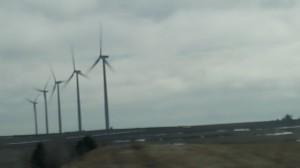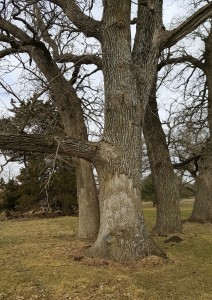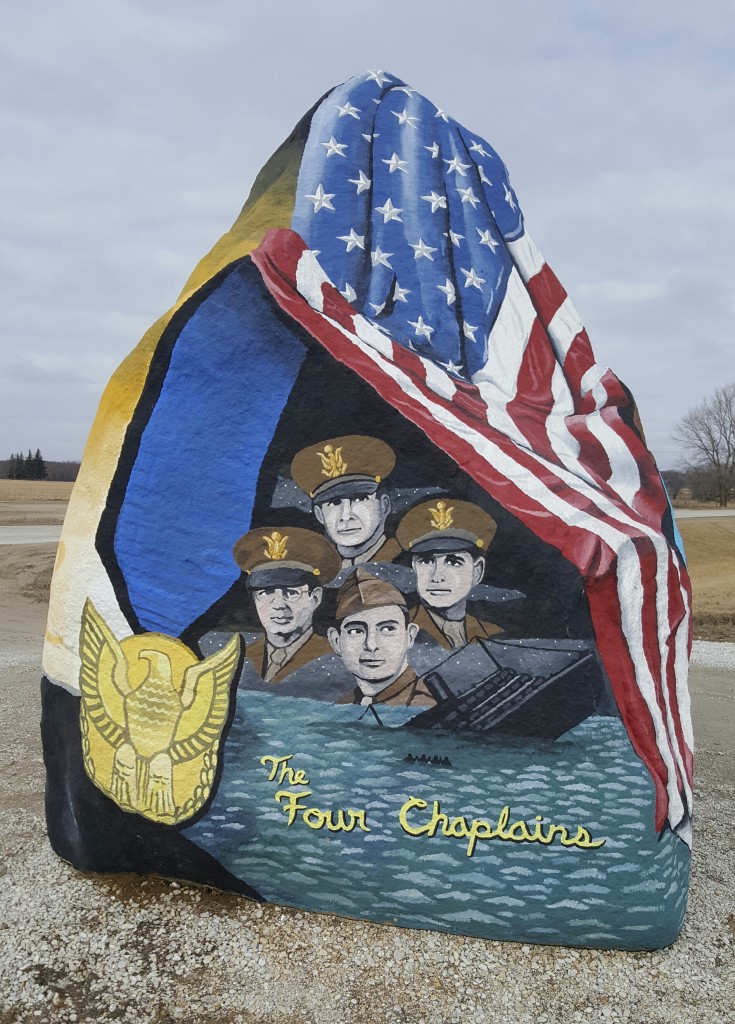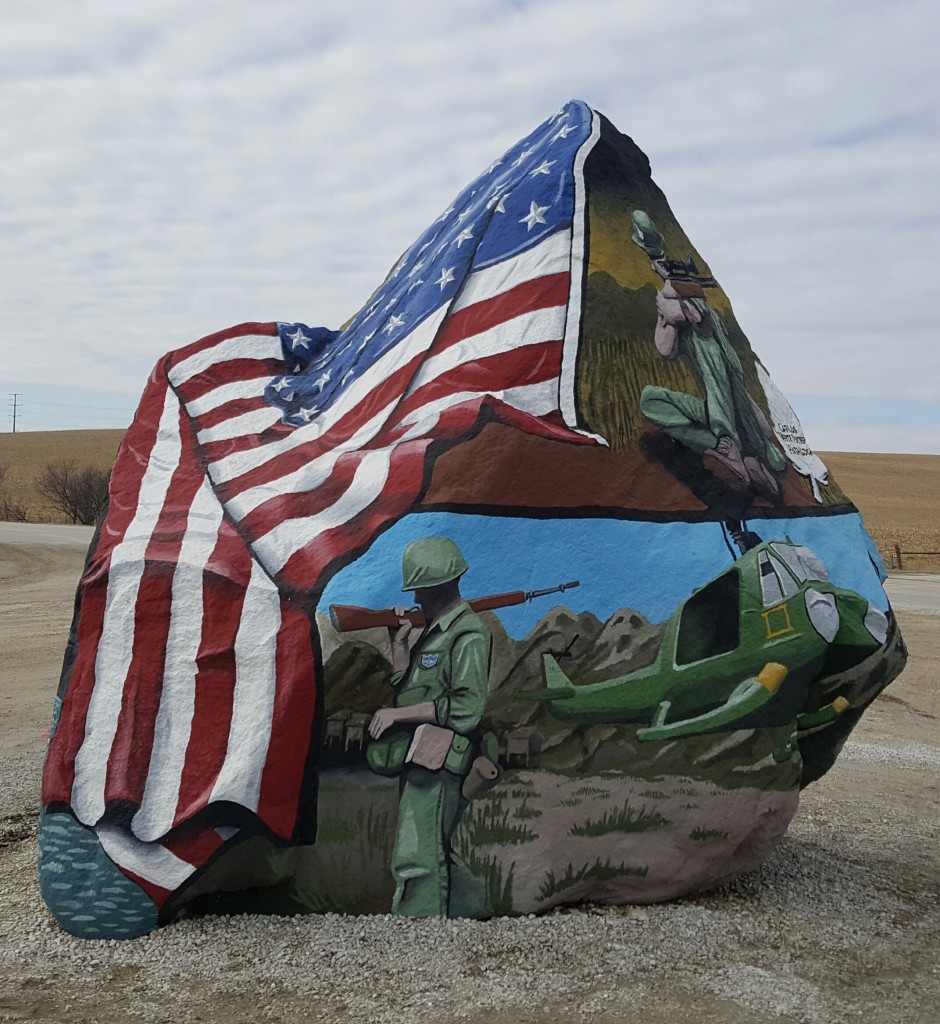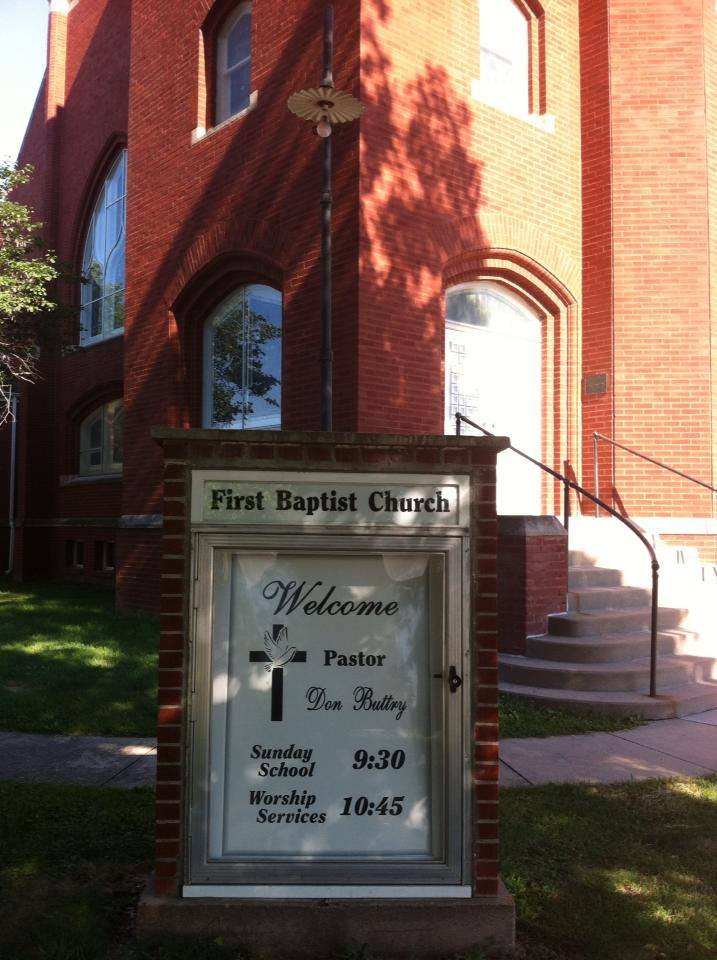- From left: Mike, me, Joe and Tom beyond the left-field fountains before Sunday’s game.
I’ve had my share of bad timing, but sometimes the timing works perfectly on a trip.
My visit to Kansas City this past weekend was ideal in nearly every respect – except that I didn’t bring my usual traveling companion along. When we planned this trip, she decided to go visit our granddaughters in Minnesota the following weekend, so Mimi passed on the KC trip. But we didn’t book her trip right away, then some pending medical tests for me ended up canceling her plans altogether. But we’d already bought baseball tickets just for our sons and me, and wouldn’t be able to add a ticket that would allow her to sit together. So she stayed home and wrote while I headed off for a weekend of baseball and barbecue with the boys.
The baseball and barbecue were great, but we piled lots more family and friends into this trip, some by planning and some by luck. And more great food in addition to the barbecue and more fun than just the baseball.
Here’s how the trip took shape and just continued to grow:
Readers of my baseball blog, Hated Yankees, know that we lived in KC from 1985 to 1991, and I took the boys to lots of Royals games (they really were boys back then, though they’ll always be my boys, especially when we’re watching baseball together). We met in Kansas City for a World Series game in 2014 and reveled in last year’s championship run by text messages, scattered around the country. So when someone suggested a KC weekend this summer, we all quickly signed on. So we bought our tickets for last Saturday’s and Sunday’s games, made our airline reservations and began looking forward to it.
Given my history of flight delays, I usually like to fly into a city the day before an event. My mother lives in a nursing home in the Kansas City area, so I planned to arrive Friday afternoon to allow plenty of time to visit Mom. My younger brother Don lives in Shenandoah, Iowa, a couple hours north of KC, so I figured I’d drive up there after the Sunday game, then drive back down to catch a Monday evening flight.
That made for a pretty full weekend: Two ballgames, at least a couple barbecue dinners and time to visit three generations of family: three sons, a brother and Mom, plus however many of Don’s large family happened to be around.
Well, that was just a start. A few weeks ago, in an email exchange about how Mom was doing (she has Alzheimer’s), my older brother Dan or I mentioned that we’d be seeing Mom in June, and the other chimed in that he would, too, so of course we pledged to connect around our schedules (Dan, a missionary who lives in Hamtramck, Mich., would be visiting some Kansas churches).
So now we’re up to a trip that includes both of my brothers (if we’d actually planned this, rather than learning fairly late about Dan’s and my coincidental plans, we’d have included our sister Carol), all three of my sons, Mom and Don’s family.
Because I had booked an evening flight home, I took a long shot that my friend Chuck Offenburger, a fellow lymphoma survivor who gave me my first job in journalism 45 years ago, would be back in Shenandoah that weekend. I figured it was unlikely, but I’d hate to learn after the fact that he’d been there. Well, he wasn’t planning a trip, but said he’d come down to see me, so we made plans for Monday lunch.
So I added a longtime friend to all that list of family on the agenda.
I also have a cousin, Doug Worgul, who lives in the Kansas City area, so I messaged him, too, and he said he’d join us for barbecue (Doug’s a leading expert on Kansas City barbecue).
That brings the tally to three sons, two brothers, Mom, a cousin and a friend, plus Don’s assorted family.
The week of the trip, I posted on CaringBridge about my plans to travel to Houston this week and next for medical tests and consultations. Steve Fehr, a friend from my Kansas City Times days, responded with encouragement. Steve shares the Buttrys’ passion for the Royals, and appeared in Hated Yankees three times last year. In addition to wishing me well in Houston, Steve mentioned that he was going to be attending a reunion of Topeka capital correspondents, then heading to the ballpark for Saturday’s game. Well, I had to tell him I was going to be there, too. He also was going to be connecting at the game with a mutual friend, Yael Abouhalkah, a Kansas City Star editorial writer since my days in KC in the ‘80s.
So now serendipity has added a brother and two friends to the plans. That seemed like plenty of family and friends for a single trip, right?
Well, I arrived first and headed to Mom’s nursing home, where I met Dan and we visited with Mom. Any visit with an Alzheimer’s patient, especially a parent, is tough, but we had some really nice moments and took her out of her unit to the ice cream parlor down the hall. I would visit later in the weekend with each of my sons (too many visitors at once can be overwhelming for her).
After a while at the nursing home, it was time to head back to the airport and pick up Joe, my middle son, flying in from Las Vegas. We went out to one of our favorite barbecue joints, Joe’s Kansas City, in an old gas station. After we chowed down on legendary barbecue (food joins family, friends and fun as themes of this F-ing post). While at Joe’s we watched the first inning of the Royals-Astros game, as KC fell behind 9-0. We congratulated ourselves on not including the Friday night game in the weekend plans.
Then we headed back to the airport to pick up Tom, my youngest son, flying in from Washington. We got Tom a Z-Man sandwich to go from Joe’s.
We had no breakfast plans and might have visited some fast-food chain near our lodging in Mom’s retirement community. But Tom quickly found a nearby diner with good reviews. So instead we headed to Ginger Sue’s in Lee’s Summit for biscuits and gravy.
After visits to Mom, we headed to the historic 18th and Vine district for my belated first visits to the Negro Leagues Baseball Museum and the American Jazz Museum (I’ll post separately about the Negro Leagues Museum, possibly next week).
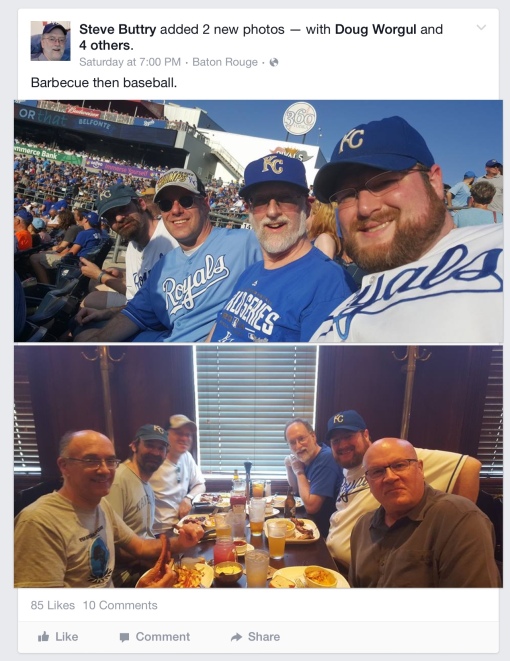 Oldest son Mike was driving down from the Twin Cities. He met us at our rooms a little before it was time to head to Jack Stack in Martin City, our favorite KC barbecue joint back in the day. Dan and Doug met us there for a lot of ribs, burnt ends, cheesy corn and old and new family stories.
Oldest son Mike was driving down from the Twin Cities. He met us at our rooms a little before it was time to head to Jack Stack in Martin City, our favorite KC barbecue joint back in the day. Dan and Doug met us there for a lot of ribs, burnt ends, cheesy corn and old and new family stories.
Dan and Doug weren’t going to the game, so we said our farewells and headed out to the ballpark. When we got there, I posted photos of the six of us at Jack Stack and the four of us at Kauffman Stadium to Facebook.
One highlight of the game was seeing Alex Gordon’s return from two months on the disabled list with a broken wrist. He delighted the home fans with a sixth-inning homer. Another highlight was seeing backup catcher Drew Butera pitch (retiring his final three batters, one of them on a strikeout). And, if the backup catcher pitches, you know most of the night’s highlights were for the other team. The Astros followed Friday’s 13-4 win with a 13-5 Saturday win.
But I’ve always told my sons a bad night at the ballpark is still a good night. That goes double if you’re spending the evening with your three sons. And a 13-5 game means you don’t miss a lot of action if you head up to Section 420 to connect with some old friends. I spent most of the fourth inning catching up with Steve and Yael. (To my chagrin, I later realized that I had forgotten both to take a picture and to thank Steve in person for the candy bars he sent me back in December when I was struggling to get my appetite back after my stem-cell transplant. Thanks, Steve!)
 In a 13-5 game, you also have some time to check Facebook (hey, there were a few pitching changes). And I noticed on Facebook that another journalism friend, Rob Curley, until recently editor of the Orange County Register, had commented on my photos that he also was in the ballpark. Rob’s from Kansas and spending the summer back in the area, and he had brought his son to the ballpark. So I told him where we were and he spent the last couple innings with us in Section 146 (some seats also open up in a 13-5 game). Again, I forgot to shoot a picture.
In a 13-5 game, you also have some time to check Facebook (hey, there were a few pitching changes). And I noticed on Facebook that another journalism friend, Rob Curley, until recently editor of the Orange County Register, had commented on my photos that he also was in the ballpark. Rob’s from Kansas and spending the summer back in the area, and he had brought his son to the ballpark. So I told him where we were and he spent the last couple innings with us in Section 146 (some seats also open up in a 13-5 game). Again, I forgot to shoot a picture.
If you’re keeping score (no, not of the Royals-Astros action, I already told you that was 13-5 and that’s plenty of scorekeeping for that), I enjoyed this game with sons from Minnesota, Las Vegas and Washington and friends from Washington, Kansas City and California. After dinner with those sons and a brother from Michigan and a cousin from KC.
Sunday morning started with a visit to Mom, then the boys, and I headed to our favorite non-barbecue Kansas City restaurant, Stroud’s, for some fried chicken, awesome gravy and frightening cinnamon rolls. Just as we rushed into the restaurant, a downpour started. Joe had bought Royals ponchos, just in case, and we wondered if we might be in for a rain delay.
But the rain stopped before we left the restaurant. Clouds hid the sun for most of the game and some of them looked threatening, but the brief downpour during dinner was the only rain.
We made it to the ballpark in time for a quick visit to the Royals Hall of Fame and a picture with the 2015 World Series trophy. Then we watched the first few pitches from beyond the outfield fountains before heading to our seats.
The Royals played much better on Sunday. Starter Ian Kennedy struck out 11 Astros in seven innings, giving up just one run and three hits. Kendrys Morales, usually the designated hitter, started at first base and belted two solo homers in a 6-1 Royals victory.
A mark of a good trip is when even your screwups work out well. Mike forgot that he had told me he wouldn’t be able to make the Sunday game, so he had to go online and buy a ticket away from the rest of us. But his ticket was in the first row, down by a second dugout where fans sit, just past first base. And he texted us that the seats next to him were empty. So, not only did we all sit together again, we upgraded from good seats to great seats.
Shockingly, no friends connected with us during the Sunday game, but the Buttrys seated in the front row exchanged a lot of jubilant high fives.
After the game, we did farewell hugs and headed our separate ways. I drove north to Shenandoah. Don told me that we were going out to dinner when I arrived, so I didn’t grab anything light to eat on the road (wouldn’t have needed much still four hours after lunch).
I knew I’d run into a crowd at Don and Pam’s house, but that also was bigger than anticipated. Pam’s mother was visiting for an 80th-birthday celebration the night before, and she was still there. The adult children with families had visited for that, and my niece, Missy Rock, was still there with her husband, Andrew, and their four children. It was my first chance to meet their 6-year-old daughter, Tina, who’d just been adopted from the Democratic Republic of the Congo earlier this year. With the comings and goings and running around, I might have missed someone, but I think my tally of family seen on this trip grew by a brother, a sister-in-law, three nephews, six nieces, a nephew-in-law, two great-nieces, two great-nephews and my brother’s mother-in-law.
And the good eating continued, with some ceviche at El Porton (Shen didn’t have a Mexican restaurant when I was there as a teen and young adult). And more the next morning: Pam made bacon, eggs and biscuits for breakfast, not that long before I headed to town for lunch with Chuck at the Depot Deli. I had some chili there and a high school classmate, Bill Hillman, who owns the deli, dropped by for a chat.
Next we went to Jay Drug to pay off a baseball bet. Actually, I think we were square, since my TCU Horned Frogs and Chuck’s Vanderbilt Commodores had split big baseball games last year. But the bets had raised expectations of malts and Jay Drug. So Chuck paid for the malts after I picked up lunch.
As great as the malts were, the conversation was even better. We talked about Jay’s and how cool it is that Shen still has a drug store with a soda fountain (Chuck wrote more about that in 2013, a lot more). We also talked about our mutual friend Evelyn Birkby, who hasn’t missed a week in 66 years of writing her newspaper column.
We talked about a lot more as well. The time passed too quickly, and soon I was headed back to KC to fly home. But here’s the weekend box score:
Mom: 1
Brothers: 2
Sons: 3
Other family: 16 or so
Friends: 5
Ball games: 2
Museums: 2
Restaurants: 6
Soda fountain: 1
That’s a grand-slam weekend right there.
Since this post is about baseball as well as travel, I’ve cross-posted it on Hated Yankees.

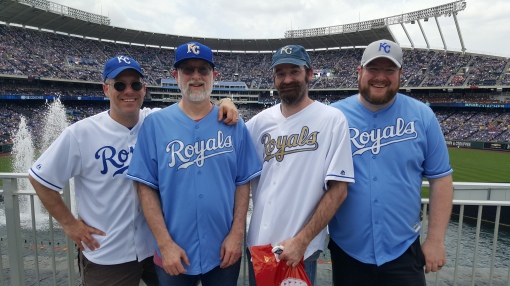
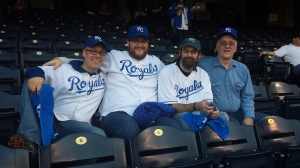


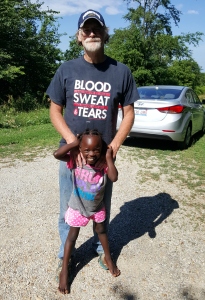

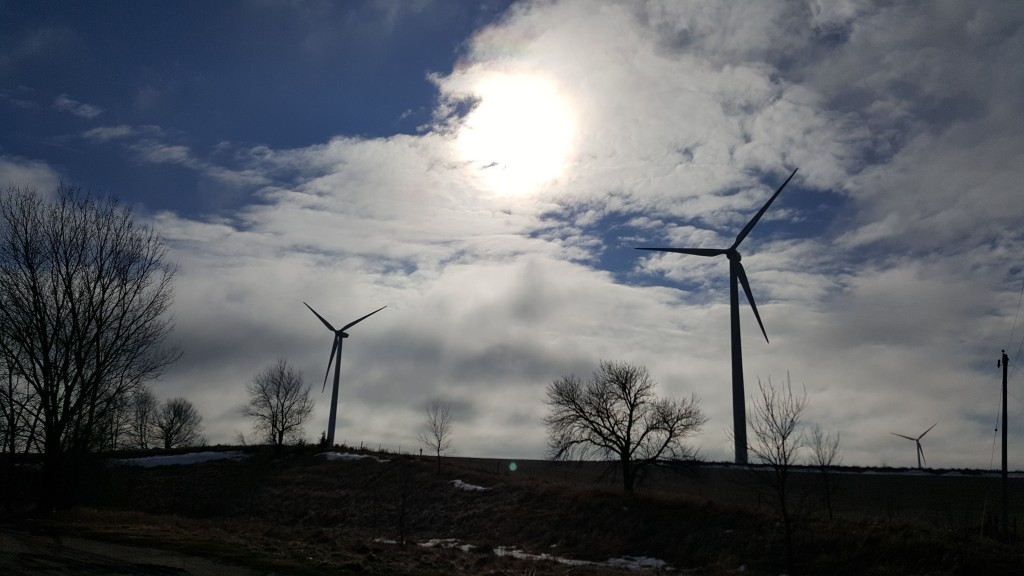
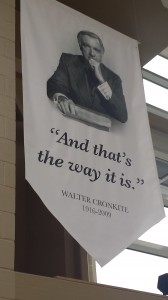
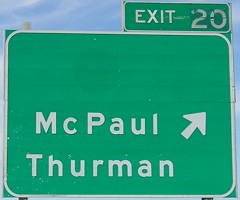 Driving alone last weekend, I had to call my usual traveling companion when I passed the exit for the tiny towns of
Driving alone last weekend, I had to call my usual traveling companion when I passed the exit for the tiny towns of 